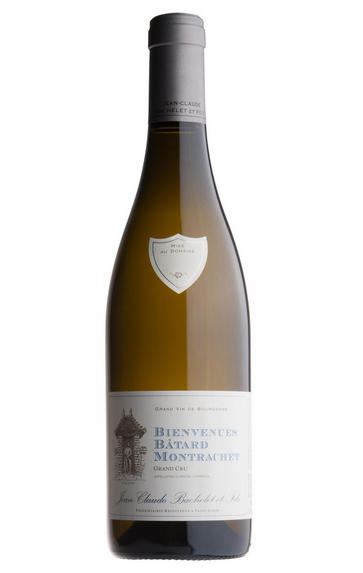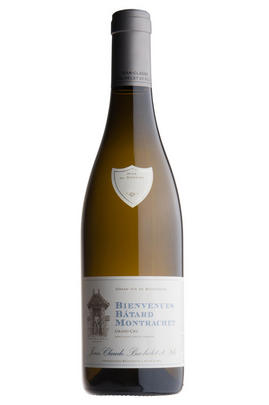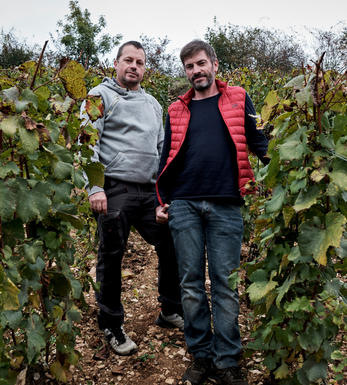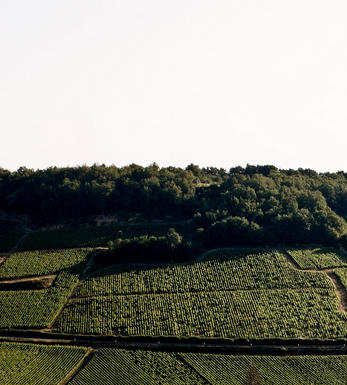
2012 Bienvenues-Bâtard-Montrachet, Grand Cru, Jean-Claude Bachelet & Fils, Burgundy

Critics reviews
Neal Martin - 30/10/2015
About this WINE

Jean-Claude Bachelet
Jean-Claude Bachelet is considered one of the most conscientious wine producers in St Aubin. The wines are exceptionally well balanced, with understated character and good medium-term ageing potential.
Benoît and Jean-Baptiste Bachelet now head up the estate, having taken over from their father Jean-Claude (who died in 2020). Jean-Claude previously sold much of the estate’s crop to négociants, but nowadays they bottle almost all their wines.
Benoît and Jean-Baptiste have now moved to superb new cellars in the hamlet of Gamay, next to St Aubin.
In the vineyard
The brothers have been experimenting with biodynamic viticulture in the vineyard and have plans to extend this across their holdings in St Aubin, Chassagne-Montrachet and Puligny-Montrachet.
In the winery
The basic principle of a long, slow barrel-ageing for almost two years remains in force, while the state-of-the-art winery has improved consistency.

Puligny-Montrachet
Puligny was one of two villages (along with Chassagne) which gained permission in 1879 to hyphenate the name of its most famous vineyard, Montrachet, to its own.
The reputation of Puligny-Montrachet is based around its four Grands Crus. Montrachet labels often boast a noble, triumphant 'Le' in front of its name, lest you dare confuse it with any lesser wine. It has much to be proud of, with many considering Montrachet to be the greatest white wine in the world. At its best it has an intensity, complexity and elegance that make you wonder how such a wine could be made from mere grapes.
The luxurious and explosive Chevalier-Montrachet is not quite as deep, although it is probably the next best. Only marginally less impressive, and rather more consistent than Montrachet is the richly textured Bâtard-Montrachet (also shared with Chassagne). Bienvenues-Bâtard-Montrachet is equally good, with the focus on honeyed finesse and exquisite balance rather than richness.
These legendary wines are supported by a host of fabulous Premier Cru vineyards capable of reaching Grand Cru quality. Brimming with flavour and intensity, Le Cailleret and Les Pucelles (which both lie across the road from Le Montrachet) are prime candidates, along with Les Demoiselles, Les Combettes and Folatières.
Sandwiched between the larger Chassagne and Meursault, Puligny produces wines that are more striking than any in the Côte d’Or, portraying a floral elegance alongside a stylish, steely concentration. They are very different to Meursault: more refined and delicate, and less rich.
Village level Puligny-Montrachet from top growers can be very good indeed, but is all too often unexciting and disappointing. Grands Crus normally need at least eight years before they can be broached, and last for 20 or more. Premiers Crus should generally be enjoyed between five and 15 years of age; village wines from three to 10 years.
In theory, you can find red Puligny-Montrachet, but it scarcely exists anymore, and is rarely worth the price tag.

Chardonnay
Chardonnay is often seen as the king of white wine grapes and one of the most widely planted in the world It is suited to a wide variety of soils, though it excels in soils with a high limestone content as found in Champagne, Chablis, and the Côte D`Or.
Burgundy is Chardonnay's spiritual home and the best White Burgundies are dry, rich, honeyed wines with marvellous poise, elegance and balance. They are unquestionably the finest dry white wines in the world. Chardonnay plays a crucial role in the Champagne blend, providing structure and finesse, and is the sole grape in Blanc de Blancs.
It is quantitatively important in California and Australia, is widely planted in Chile and South Africa, and is the second most widely planted grape in New Zealand. In warm climates Chardonnay has a tendency to develop very high sugar levels during the final stages of ripening and this can occur at the expense of acidity. Late picking is a common problem and can result in blowsy and flabby wines that lack structure and definition.
Recently in the New World, we have seen a move towards more elegant, better- balanced and less oak-driven Chardonnays, and this is to be welcomed.


Buying options
Add to wishlist
Description
One barrel only, so short rations this year. The superbly elegant nose doesn’t show the new oak at all, a sign of the concentration of the fruit. Scintillating on the palate, with a graceful, cashmere texture threaded through with a point of vibrancy. Plenty to get excited about except the volume produced.
Jasper Morris MW, Burgundy Wine Director
Having moved into their smart new cellar, enabling them to optimise the winemaking side, the Bachelet boys, Benoît and Jean- Baptiste, are evolving their viticultural techniques as well. The vineyards are all ploughed and are managed according to lutte raisonnée, but there are biodynamic experiments in Les Charmois, Les Blanchots Dessus and their Grand Cru. This domaine, which receives regular plaudits in France, deserves to be better known internationally. There are short rations this year, as for everybody: Overall their yields in 2012 are 25 hl/ha in white and 19 h/ha for the Pinot Noir vineyards.
wine at a glance
Delivery and quality guarantee